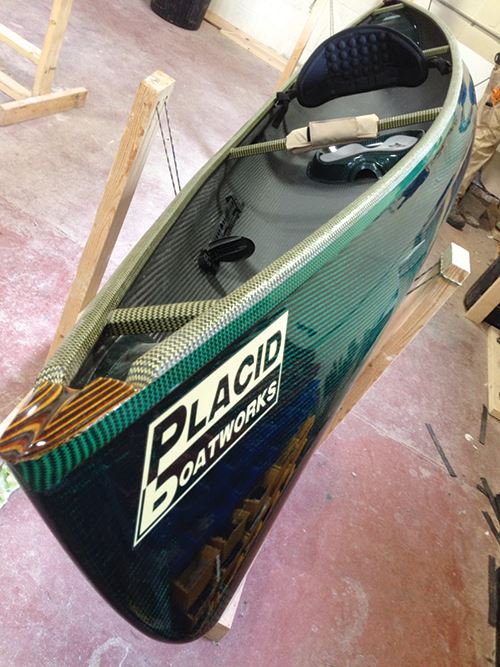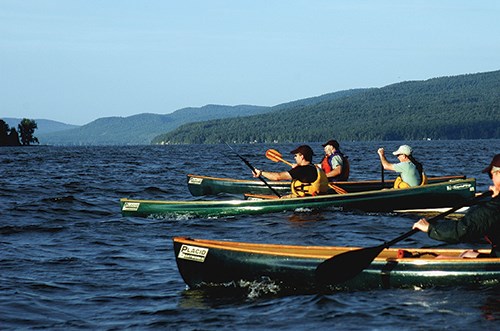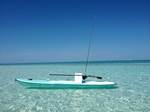Back-country boating: Carbon fiber Adirondack pack canoe
Placid Boatworks (Lake Placid, NY, US) makes modern composite versions of classic, but relatively heavy, Adirondack pack canoes, using vacuum-infused carbon fiber. Here's how.
For the true backcountry explorer, a strong but lightweight boat is essential — one that can easily be portaged lake-to-lake and stream-to-stream. To meet that need, Placid Boatworks (Lake Placid, NY, US) makes modern composite versions of classic, but relatively heavy, Adirondack pack canoes. At 3.6m long, its Spitfire Ultra single-seater can be double-blade paddled, like a kayak, and it weighs less than 8 kg (traditional pack canoes weigh 20 kg or more) yet can carry more than 136 kg.
“We wanted to create a solo canoe with the right balance between very light weight and ruggedness,” says Placid owner Joe Moore, who credits success to vacuum infusion processing and high-performance reinforcements from A&P Technology Inc. (Cincinnati, OH, US). “We’ve applied large-vessel technology to a very small boat.”
The canoe’s outer hull incorporates a single ply of A&P’s Bimax carbon fiber biaxial (±45°) fabric, backed by a plain-weave carbon fabric for the inside hull. A&P’s QISO slit carbon fiber braid [0°/+60°/-60°] is used as a reinforcing layer between the Bimax and plain weave. Additional Bimax is incorporated into the bottom of the canoe. A&P’s Sharx biaxial hybrid (carbon and aramid fiber) sleeving material, wrapped around Divinycell closed-cell foam from DIAB Americas LP (DeSoto, TX, US), forms the canoe’s gunwales.
The dry reinforcements are layed up in a female composite mold, built in-house, which is first sprayed with gel coat; white gel coat is used below the water line, and transparent gel coat everywhere else. Layup includes peel ply and resin flow mesh supplied by Airtech International Inc. (Huntington Beach, CA, US). Placid employs a reusable silicone vacuum bag and reusable vacuum plenums around the mold perimeter. The infusion resin is 8084 epoxy vinyl ester manufactured by Ashland Performance Materials(Columbus, OH, US). The canoe’s four foam-cored thwarts, or crossmembers, are infused separately. Parts are cured at room temperature. After demolding the hull, Placid attaches thwarts and a composite seat with an adjustable back support and foot pegs, using methyl methacrylate adhesive supplied by Plexus(Danvers, MA, US). Moore says infusion ensures a “clean shop,” reduces resin waste and produces consistent parts with very low void content and a better fiber/resin ratio than can be achieve with hand layup.
Related Content
-
Cryo-compressed hydrogen, the best solution for storage and refueling stations?
Cryomotive’s CRYOGAS solution claims the highest storage density, lowest refueling cost and widest operating range without H2 losses while using one-fifth the carbon fiber required in compressed gas tanks.
-
Plant tour: Joby Aviation, Marina, Calif., U.S.
As the advanced air mobility market begins to take shape, market leader Joby Aviation works to industrialize composites manufacturing for its first-generation, composites-intensive, all-electric air taxi.
-
Sulapac introduces Sulapac Flow 1.7 to replace PLA, ABS and PP in FDM, FGF
Available as filament and granules for extrusion, new wood composite matches properties yet is compostable, eliminates microplastics and reduces carbon footprint.















